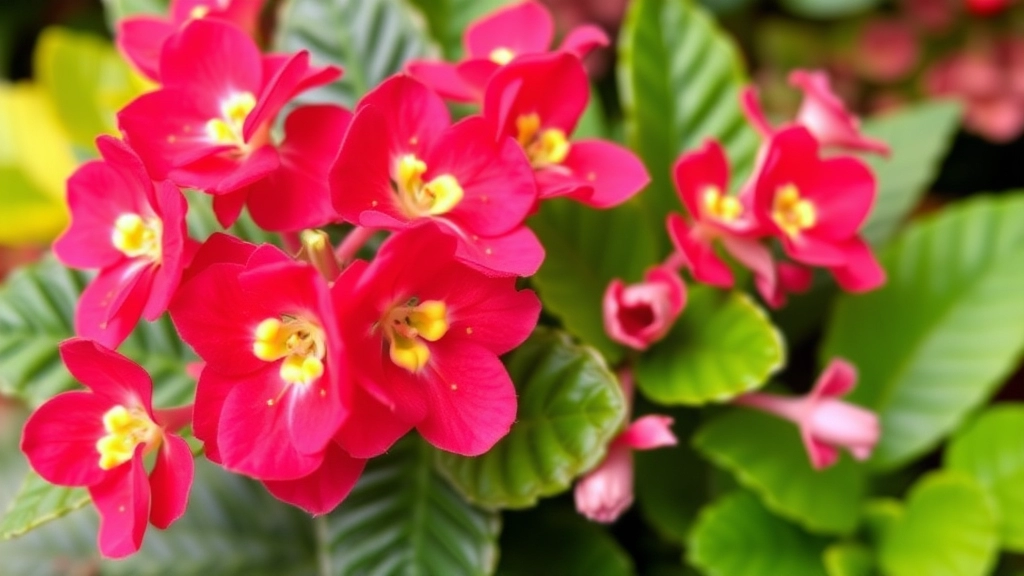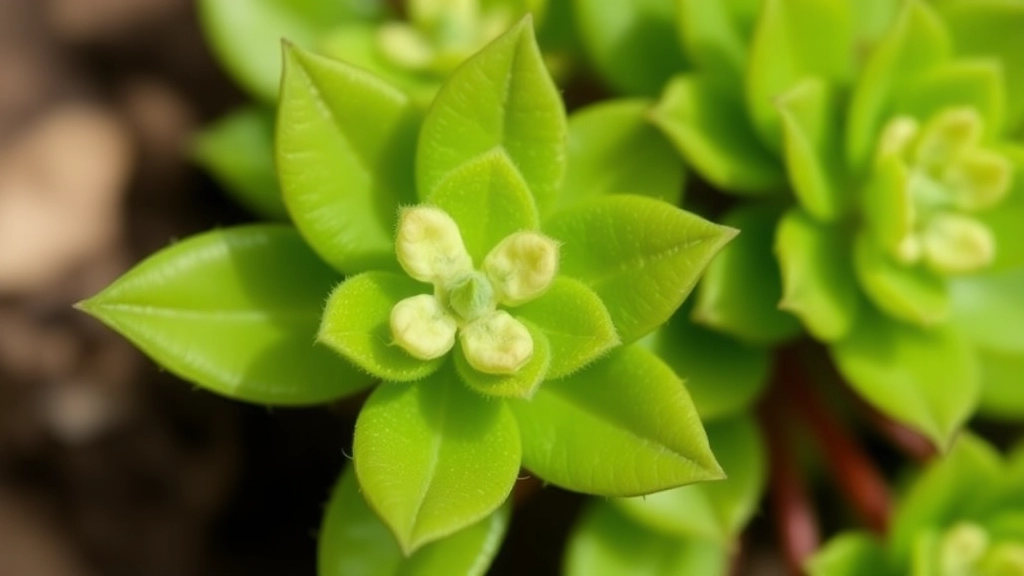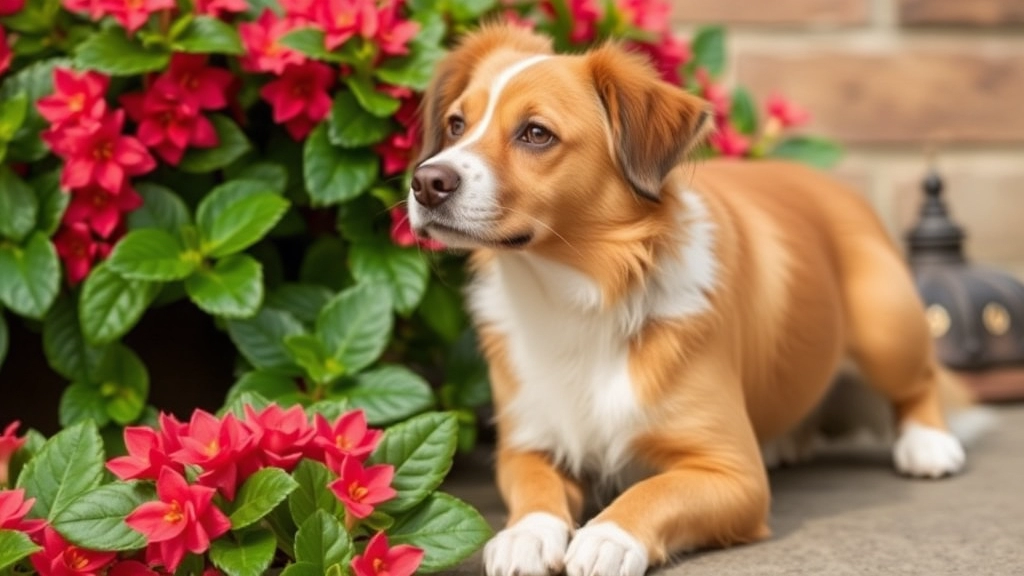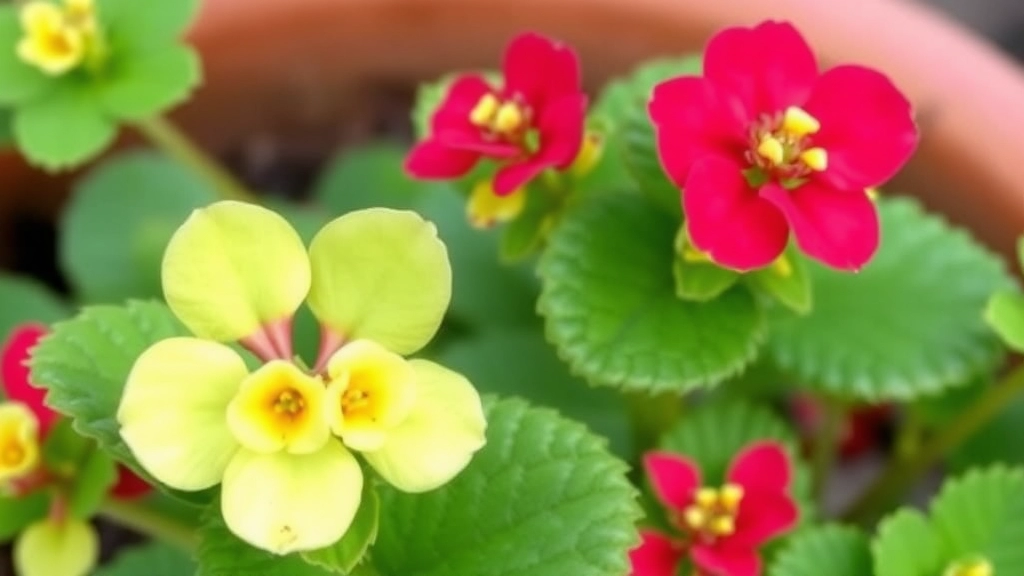Is Kalanchoe Poisonous to Dogs?
Wondering if kalanchoe is poisonous to dogs? You’re not alone. As a pet owner, it’s crucial to know which plants can harm your furry friend. Kalanchoe, a popular houseplant, is indeed toxic to dogs. If ingested, it can cause vomiting, diarrhea, and even heart arrhythmias. Understanding the symptoms and knowing what steps to take can make all the difference.
What to Do If Your Dog Eats Kalanchoe
So, what should you do if your dog eats kalanchoe? First, don’t panic. Remove any remaining plant material from their mouth and contact your vet immediately. Quick action can prevent severe complications. In this article, we’ll dive into the symptoms of kalanchoe poisoning, the toxic compounds involved, and how to ensure your home is safe for your dog. Stay informed and keep your pet safe.
Symptoms of Kalanchoe Poisoning in Dogs
As a dog owner, it’s natural to worry about what your furry friend might ingest. If you suspect your dog has eaten Kalanchoe, recognising the symptoms early can be crucial for their health.
Common Symptoms
Kalanchoe poisoning can manifest in various ways. Here are some signs to watch for:
- Vomiting: This is often one of the first signs you’ll notice.
- Diarrhoea: Loose stools can indicate gastrointestinal distress.
- Lethargy: If your dog seems unusually tired or inactive, it could be a red flag.
- Loss of Appetite: A sudden disinterest in food may occur.
- Abdominal Pain: Signs of discomfort, such as whining or reluctance to be touched, can be telling.
- Heart Issues: In severe cases, Kalanchoe can affect the heart, leading to abnormal heart rhythms.
What to Do Next
If you observe any of these symptoms, it’s essential to act quickly. The sooner you respond, the better the outcome for your pet. For more detailed information on protecting your pets, you can refer to our guide on Kalanchoe toxicity and pet safety. Additionally, if you want to learn more about the specific effects of Kalanchoe on pets, check out our article on Kalanchoe plant toxicity.
Understanding the Toxic Compounds in Kalanchoe

So, you’re wondering what makes Kalanchoe so dangerous for our furry friends, right?
Kalanchoe plants contain toxic compounds known as bufadienolides. These are a type of cardiac glycoside, which can mess with your dog’s heart and overall health.
Here’s a quick breakdown of what these toxic compounds can do:
- Heart Issues: They can lead to irregular heartbeats or even heart failure.
- Gastrointestinal Distress: Symptoms like vomiting and diarrhea can occur, making your pup feel pretty miserable.
- Neurological Effects: In some cases, dogs may experience tremors or seizures.
It’s crucial to understand that even a small amount can cause problems.
Immediate Steps to Take if Your Dog Ingests Kalanchoe
If you suspect your dog has ingested Kalanchoe, it’s natural to feel a surge of panic. What should you do next? Time is of the essence, and knowing the right steps can make all the difference.
Assess the Situation
- Identify the Plant: Confirm that the plant your dog has ingested is indeed Kalanchoe. This succulent is known for its vibrant flowers and fleshy leaves, but it can be easily confused with other houseplants. For more information on identifying different varieties, check out our Kalanchoe Succulent Identification Guide.
- Observe Your Dog: Monitor your dog for any immediate symptoms such as:
- Vomiting
- Diarrhoea
- Lethargy
- Drooling
- Abdominal pain
Contact Your Veterinarian
- Immediate Call: Reach out to your veterinarian or an emergency animal clinic as soon as possible. Provide them with details about your dog’s size, the amount of Kalanchoe ingested, and any symptoms observed.
- Follow Instructions: Your vet may instruct you to induce vomiting or bring your dog in for an examination. Always follow their guidance closely.
Inducing Vomiting
- Only if Advised: Do not attempt to induce vomiting unless your veterinarian specifically tells you to do so. Some substances can cause more harm if vomited.
Keep Records
- Document Everything: Take note of the time of ingestion, the amount consumed, and any symptoms. This information will be invaluable to your vet.
Prepare for the Visit
- Bring the Plant: If possible, take a sample of the Kalanchoe with you to the vet. This can help them assess the situation more effectively. For more insights on plant care and propagation, you can read our Chandelier Plant Kalanchoe Care Guide.
Veterinary Treatment Options for Kalanchoe Poisoning

If your dog has ingested Kalanchoe, understanding the veterinary treatment options available is crucial for ensuring their recovery. The symptoms can escalate quickly, and timely intervention can make all the difference.
Initial Assessment
When you rush your dog to the vet, the first step will often involve a thorough assessment. The veterinarian will:
- Conduct a physical examination to evaluate your dog’s overall condition.
- Ask about the amount and type of Kalanchoe ingested, as different varieties may have varying toxicity levels.
- Review symptoms such as vomiting, diarrhea, or lethargy.
Treatment Options
Depending on the severity of the poisoning, several treatment avenues may be explored:
- Inducing Vomiting
If the ingestion was recent, the vet may induce vomiting to prevent further absorption of toxins. This is usually most effective within the first few hours. - Activated Charcoal
Administering activated charcoal can help absorb any remaining toxins in the gastrointestinal tract. This is often used in conjunction with other treatments. - Intravenous Fluids
If your dog is dehydrated or showing signs of distress, IV fluids may be necessary to stabilize their condition and support kidney function. - Medications
Antiemetics may be prescribed to control vomiting, while other medications can help manage symptoms like pain or anxiety. - Monitoring
Continuous observation in a veterinary facility may be required, especially if your dog exhibits severe symptoms. This allows for quick interventions if their condition worsens.
Follow-Up Care
Post-treatment, your vet may recommend follow-up visits to monitor your dog’s recovery. They might also provide guidance on diet and care to ensure your dog returns to full health.
Safe Alternatives to Kalanchoe for Dog-Friendly Homes
As we explore the importance of creating a safe environment for our furry friends, it’s essential to consider dog-friendly plant options that won’t pose a risk to their health. If you’re looking for alternatives to Kalanchoe, here are some excellent choices that can brighten up your home without the worry of toxicity.
Dog-Friendly Plant Options
- Spider Plant (Chlorophytum comosum)
– Non-toxic to dogs.
– Easy to care for and thrives in various light conditions.
– Known for its air-purifying qualities. - Boston Fern (Nephrolepis exaltata)
– Safe for pets and adds a lush, green touch to your space.
– Prefers humidity, making it perfect for bathrooms or kitchens. - Areca Palm (Dypsis lutescens)
– Non-toxic and pet-friendly.
– This palm can grow tall, offering a tropical feel to your home. - Bamboo Palm (Chamaedorea seifrizii)
– Another safe choice for dogs.
– It’s known to filter indoor air pollutants effectively. - Parlor Palm (Chamaedorea elegans)
– Safe for pets and low-maintenance.
– Ideal for low-light areas of your home.
Tips for Choosing Dog-Friendly Plants
- Research: Always verify if a plant is safe before bringing it home. For example, you might explore the [top health benefits](https://planthq.org/kalanchoe-mother-of-thousands-top-health-benefits/) of Kalanchoe to understand its properties better.
- Placement: Keep plants out of reach if your dog is prone to chewing. You could also consider the [toxicity and safety tips](https://planthq.org/kalanchoe-pink-butterflies-toxicity-and-safety-tips/) for specific plants to ensure a safe environment.
- Monitor: Observe your dog’s behaviour around new plants to ensure they’re not tempted to nibble.
By opting for these safe alternatives, you can enjoy the beauty of greenery in your home while keeping your dog safe from potential harm.
How to Prevent Kalanchoe Poisoning in Dogs

So, you’re worried about Kalanchoe poisoning in your furry friend? You’re not alone. Many dog owners share the same concern, and it’s totally valid.
Keep Kalanchoe Out of Reach
First things first, if you have Kalanchoe plants at home, make sure they’re in a spot where your dog can’t get to them.
- High Shelves: Place them on shelves that are out of your dog’s jumping reach.
- Hanging Baskets: Consider hanging them from the ceiling or using wall-mounted planters.
Educate Yourself and Others
Knowledge is power, right?
- Know the Signs: Familiarise yourself with the symptoms of Kalanchoe poisoning. This way, you can act fast if something happens.
- Inform Family and Friends: Make sure everyone in your home knows about the dangers of Kalanchoe for dogs.
Create a Dog-Friendly Space
Designate areas in your home that are strictly for your dog.
- Dog-Proof Zones: Keep plants, including Kalanchoe, in rooms that are off-limits to your pooch.
- Use Barriers: Baby gates can be a great way to keep your dog away from certain areas.
Opt for Dog-Safe Plants
Thinking about adding some greenery?
- Choose Wisely: Look for pet-friendly plants like spider plants, Boston ferns, or bamboo palms.
- Research: Always check if a plant is safe before bringing it home.
Regularly Check Your Garden
If you have an outdoor space, keep an eye out for Kalanchoe.
- Remove Any Plants: If you find Kalanchoe growing in your garden, it’s best to remove it immediately.
- Educate Neighbours: Let your neighbours know about the risks, especially if they have pets too.
Common Misconceptions About Kalanchoe’s Toxicity
When discussing Kalanchoe poisoning in dogs, many misconceptions can cloud the understanding of its true risks.
One prevalent belief is that all Kalanchoe species are equally toxic. In reality, while most varieties contain toxic compounds, the level of toxicity can vary significantly. For instance, the Kalanchoe Pink Butterflies has specific safety tips that pet owners should be aware of.
Another common myth is that the effects of Kalanchoe poisoning are immediate. In truth, symptoms may take hours or even days to manifest, leading to delayed recognition and treatment.
Some pet owners assume that a small amount of Kalanchoe is harmless. However, even minimal ingestion can pose risks, particularly for smaller dogs or those with pre-existing health conditions. It’s essential to understand the side effects and risks associated with Kalanchoe Pinnata.
It’s also often thought that Kalanchoe is only dangerous when ingested. However, contact with the plant’s sap can cause skin irritation, further complicating the situation.
Lastly, many believe that all houseplants are safe for pets. This is a dangerous assumption, as numerous common plants, including Kalanchoe, can be toxic to dogs.
FAQs About Kalanchoe Poisoning in Dogs
What makes Kalanchoe poisonous to dogs?
Kalanchoe plants contain toxic compounds known as bufadienolides, which are a type of cardiac glycoside. These compounds can cause serious health issues in dogs, including heart problems, gastrointestinal distress, and neurological effects.
What symptoms should I look for if my dog ingests Kalanchoe?
Common symptoms of Kalanchoe poisoning in dogs include irregular heartbeats, vomiting, diarrhea, tremors, and seizures. Even a small amount of the plant can cause significant problems.
What should I do if my dog has eaten Kalanchoe?
If you suspect your dog has ingested Kalanchoe, seek veterinary care immediately. Quick intervention is crucial for effective treatment and recovery.
What treatments are available for Kalanchoe poisoning?
Treatment options may include inducing vomiting, administering activated charcoal, providing intravenous fluids, and prescribing medications to manage symptoms. Continuous monitoring in a veterinary facility may also be necessary for severe cases.
How can I prevent Kalanchoe poisoning in my dog?
Preventive measures include keeping Kalanchoe plants out of your dog’s reach, educating yourself and others about the risks, creating dog-friendly spaces, opting for pet-safe plants, and regularly checking your garden for any Kalanchoe plants.
Are there any dog-safe alternatives to Kalanchoe?
Yes, there are many dog-safe plants you can choose from, such as spider plants, Boston ferns, and bamboo palms. Always research whether a plant is pet-friendly before bringing it into your home.
What should I do if I find Kalanchoe in my garden?
If you discover Kalanchoe growing in your garden, it’s best to remove it immediately to prevent accidental ingestion by your dog. Informing your neighbors about the risks can also help protect their pets.
Why is it important to educate family and friends about Kalanchoe poisoning?
Educating everyone in your household ensures that all members are aware of the dangers and can take preventive measures to keep your dog safe. Knowledge about the symptoms also allows for quicker action if an incident occurs.
